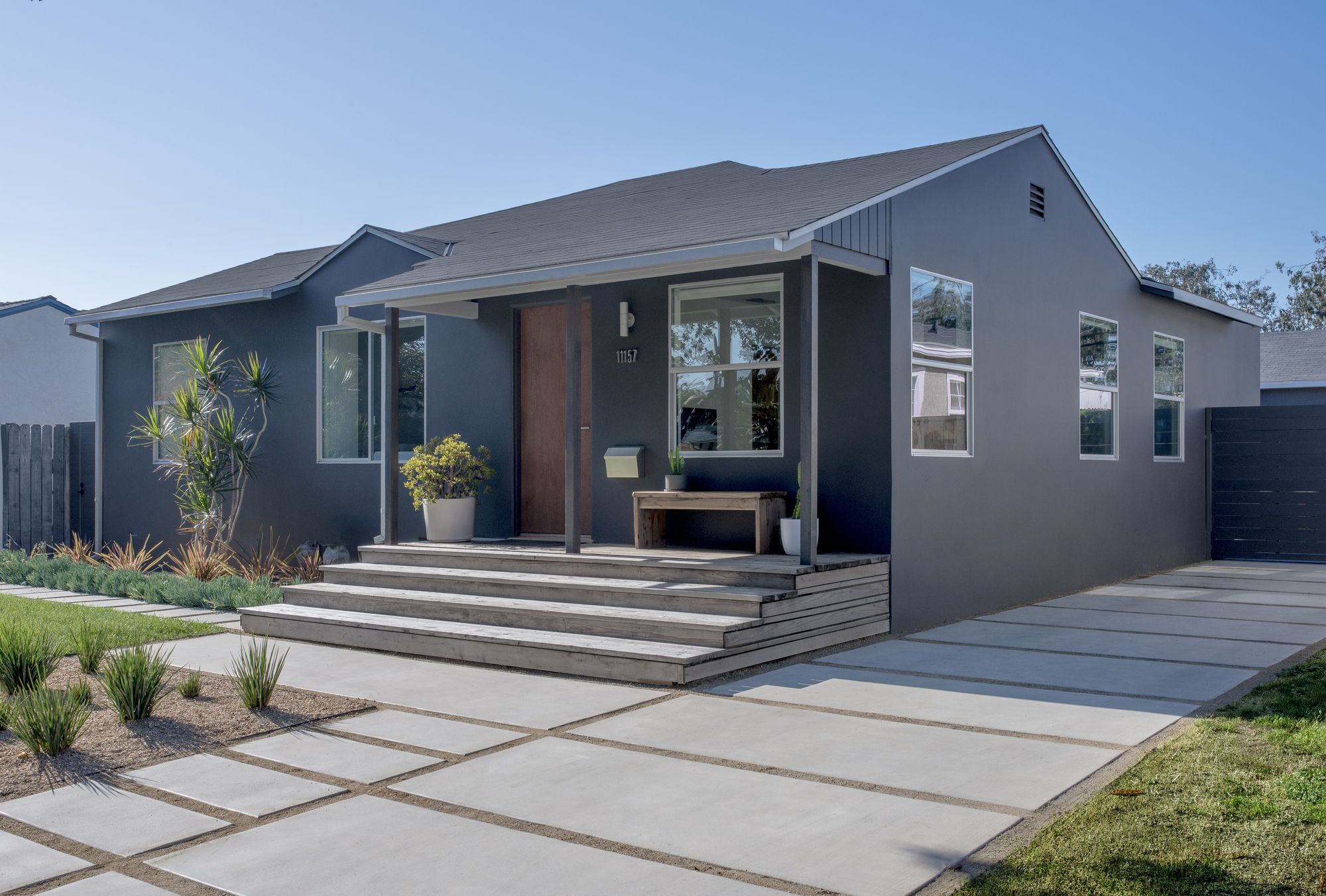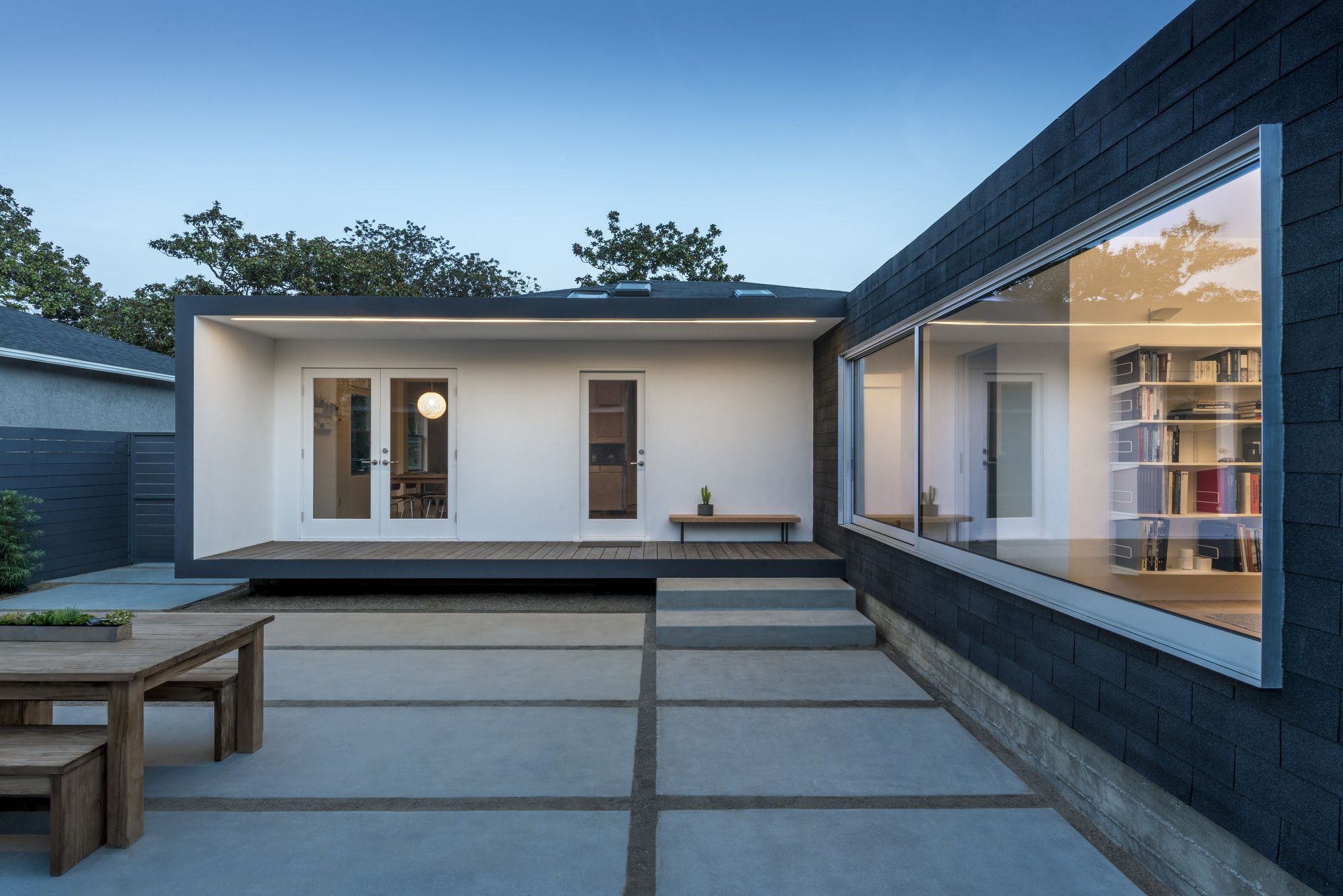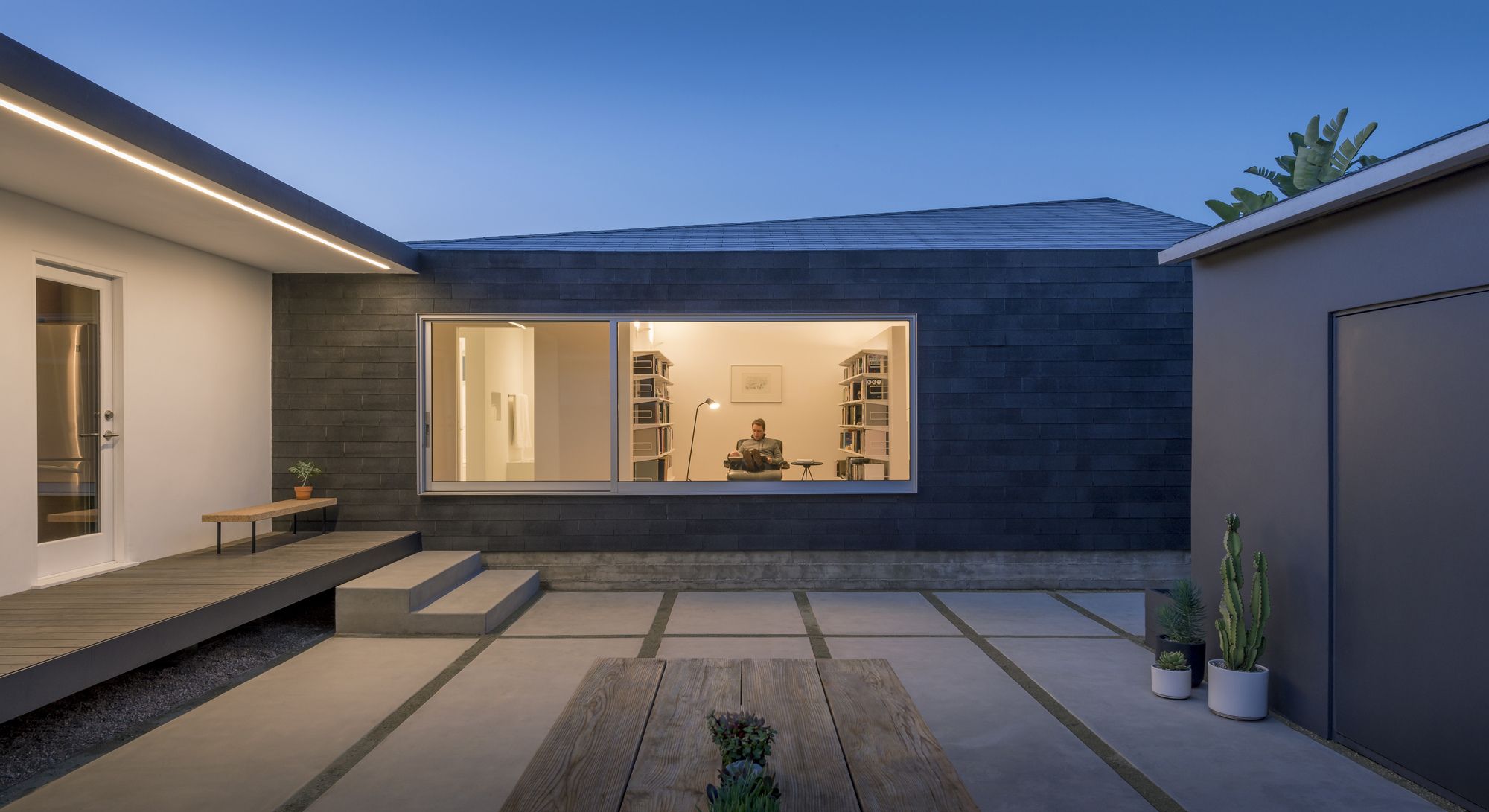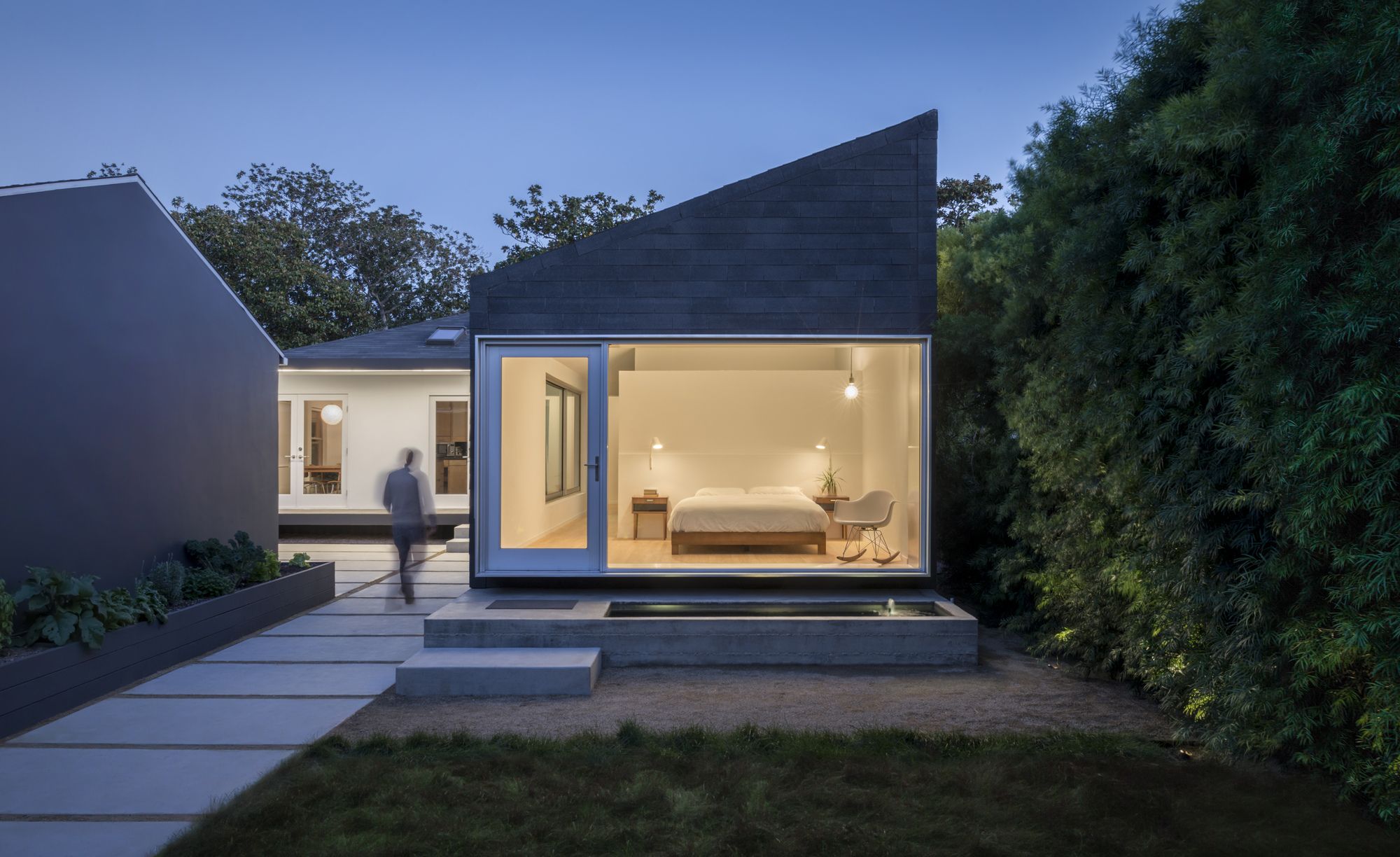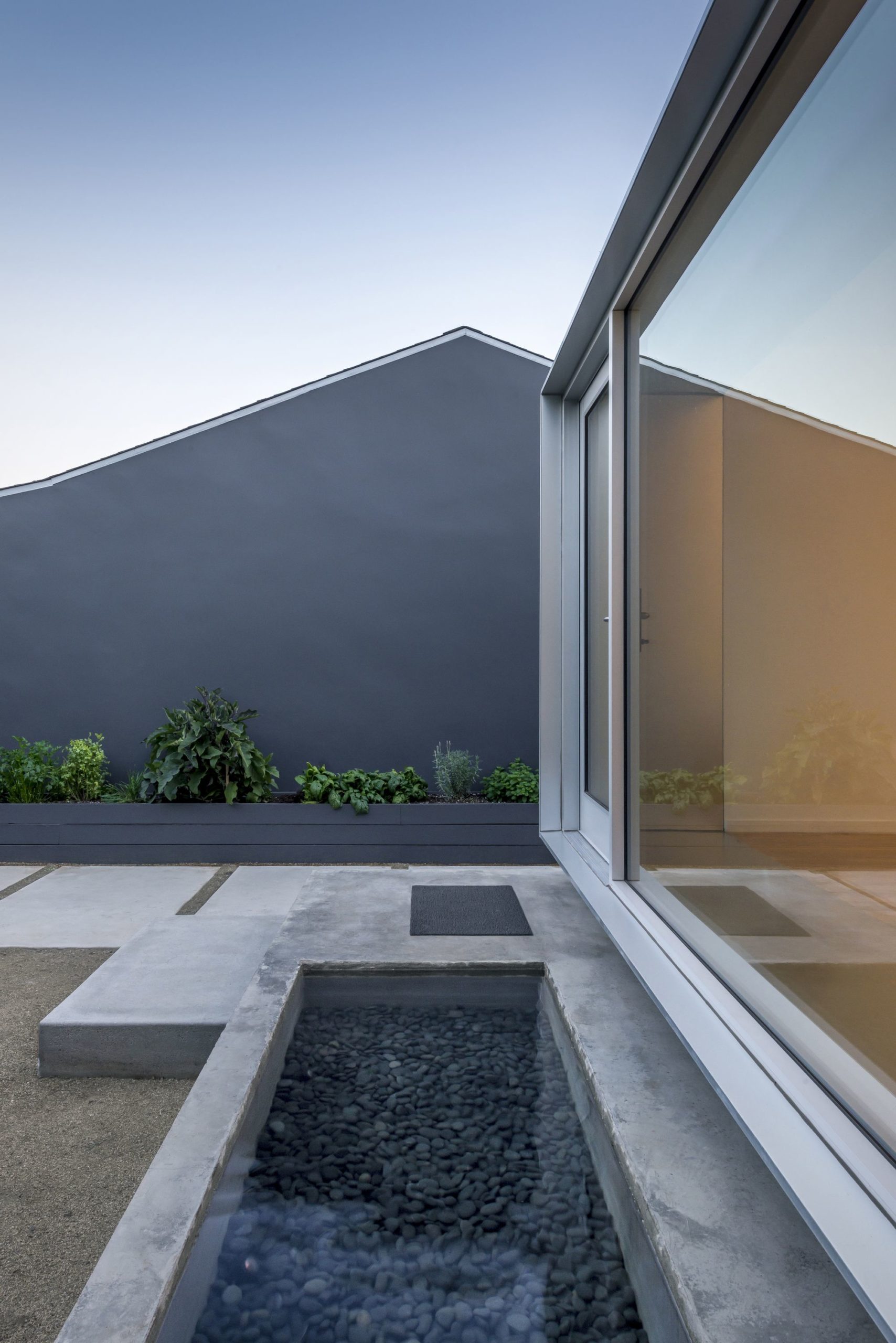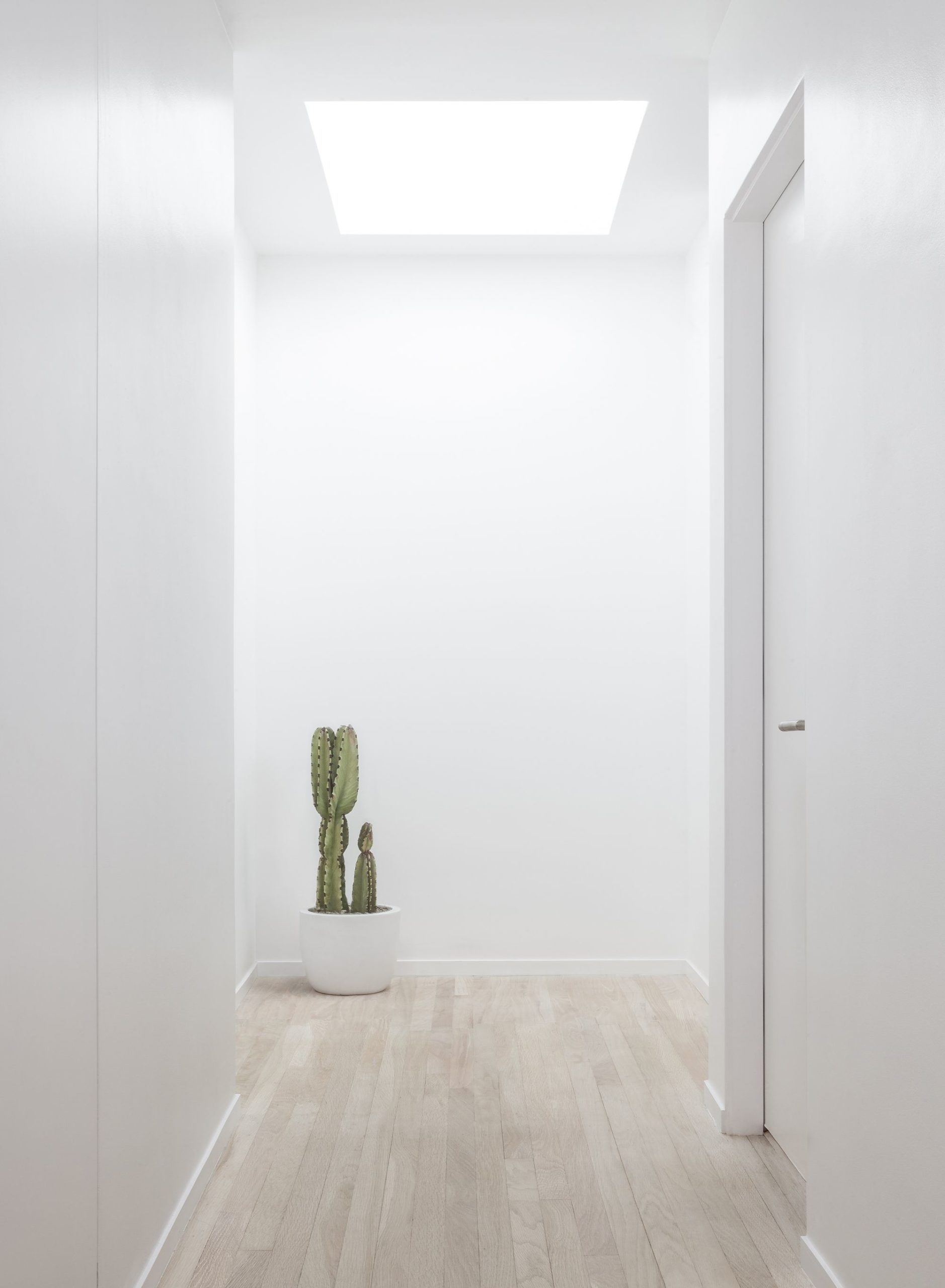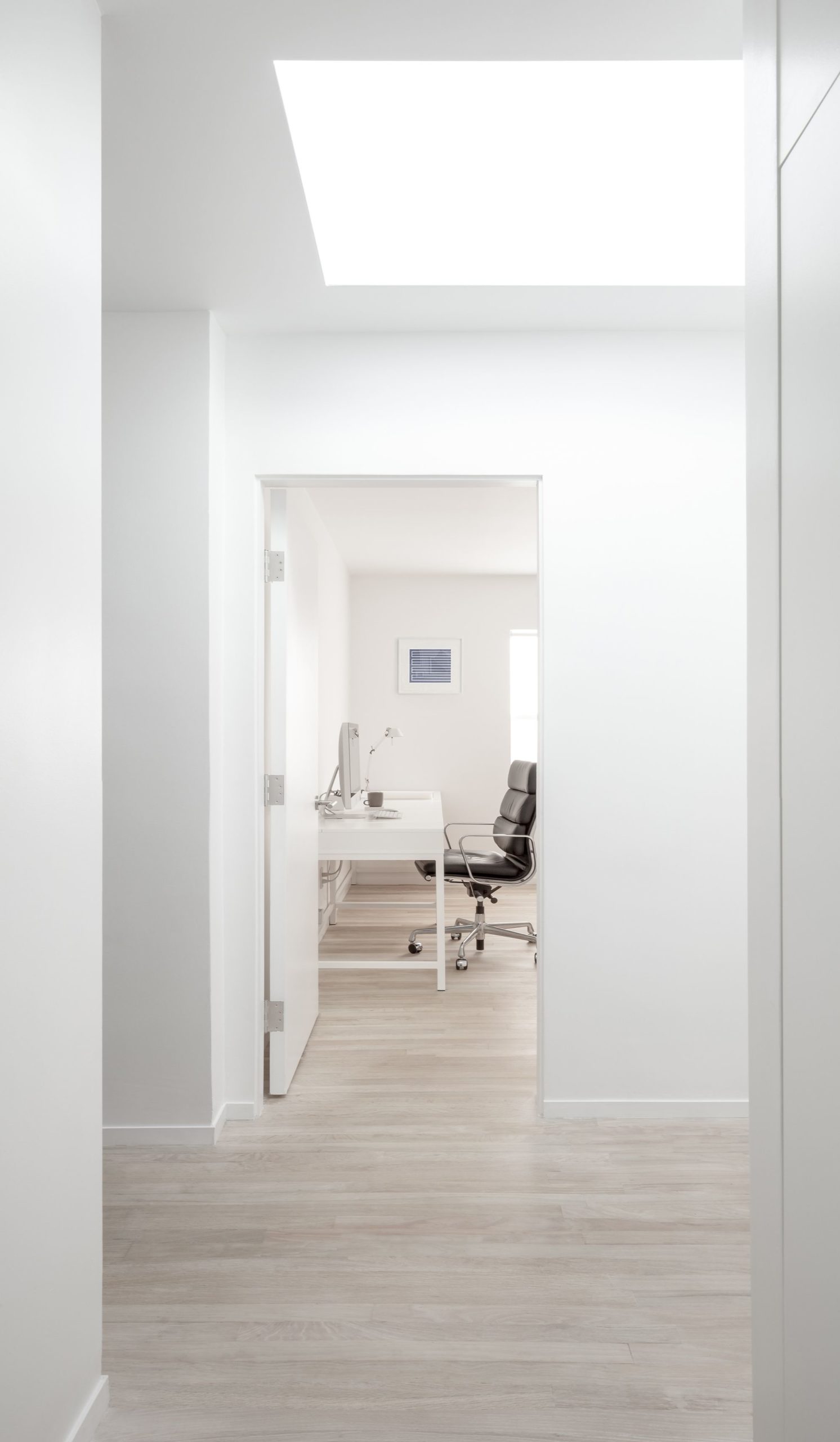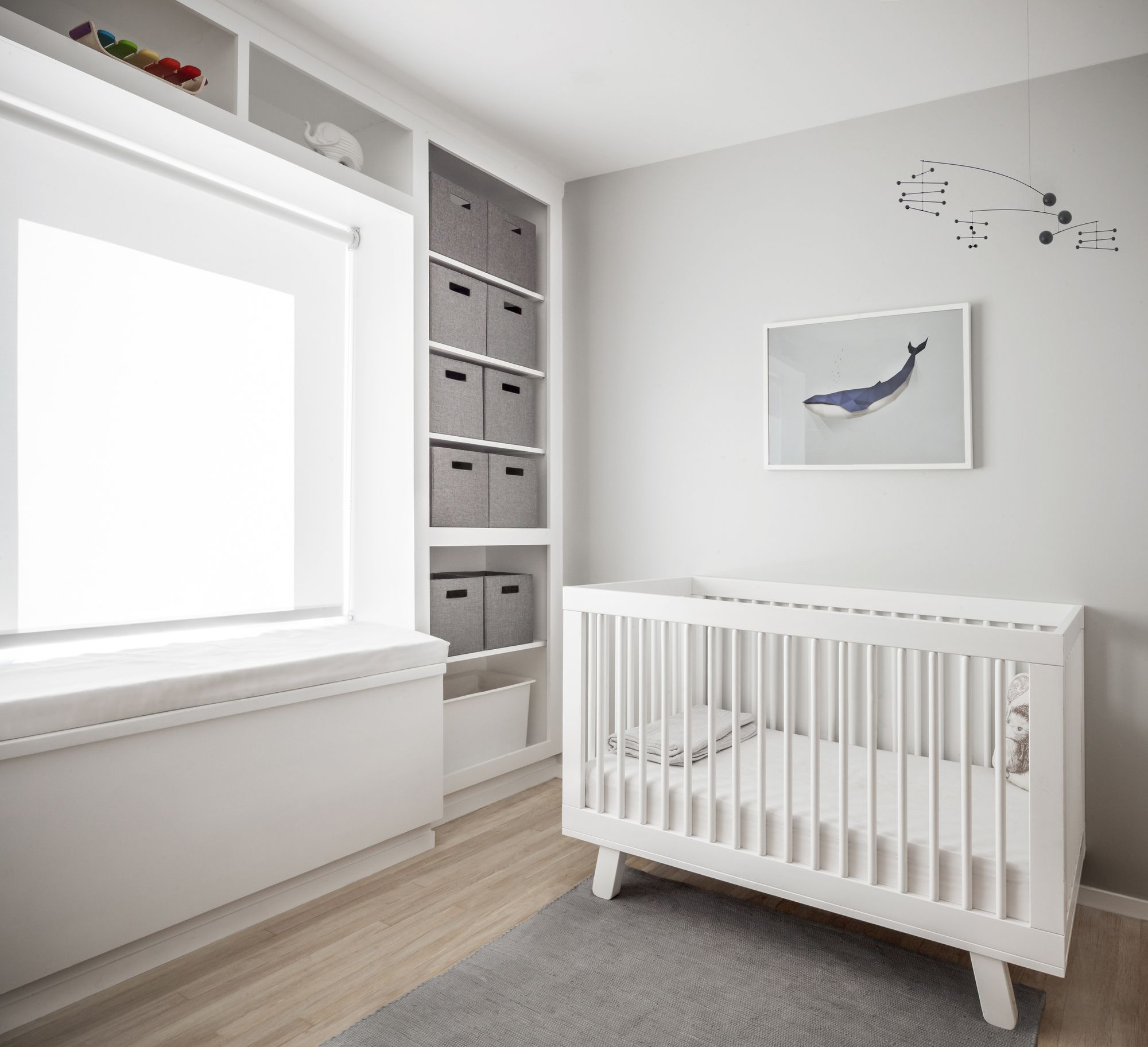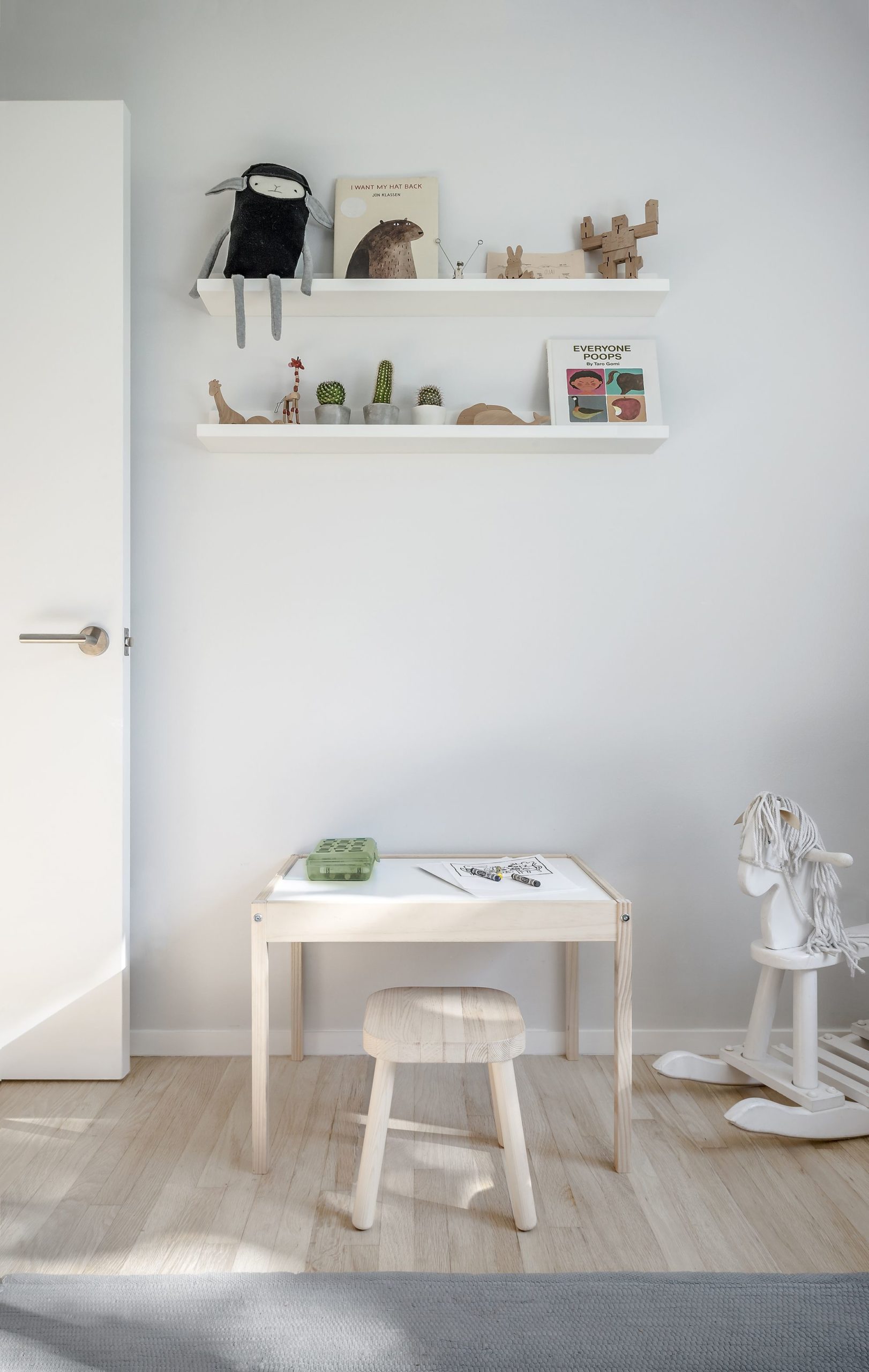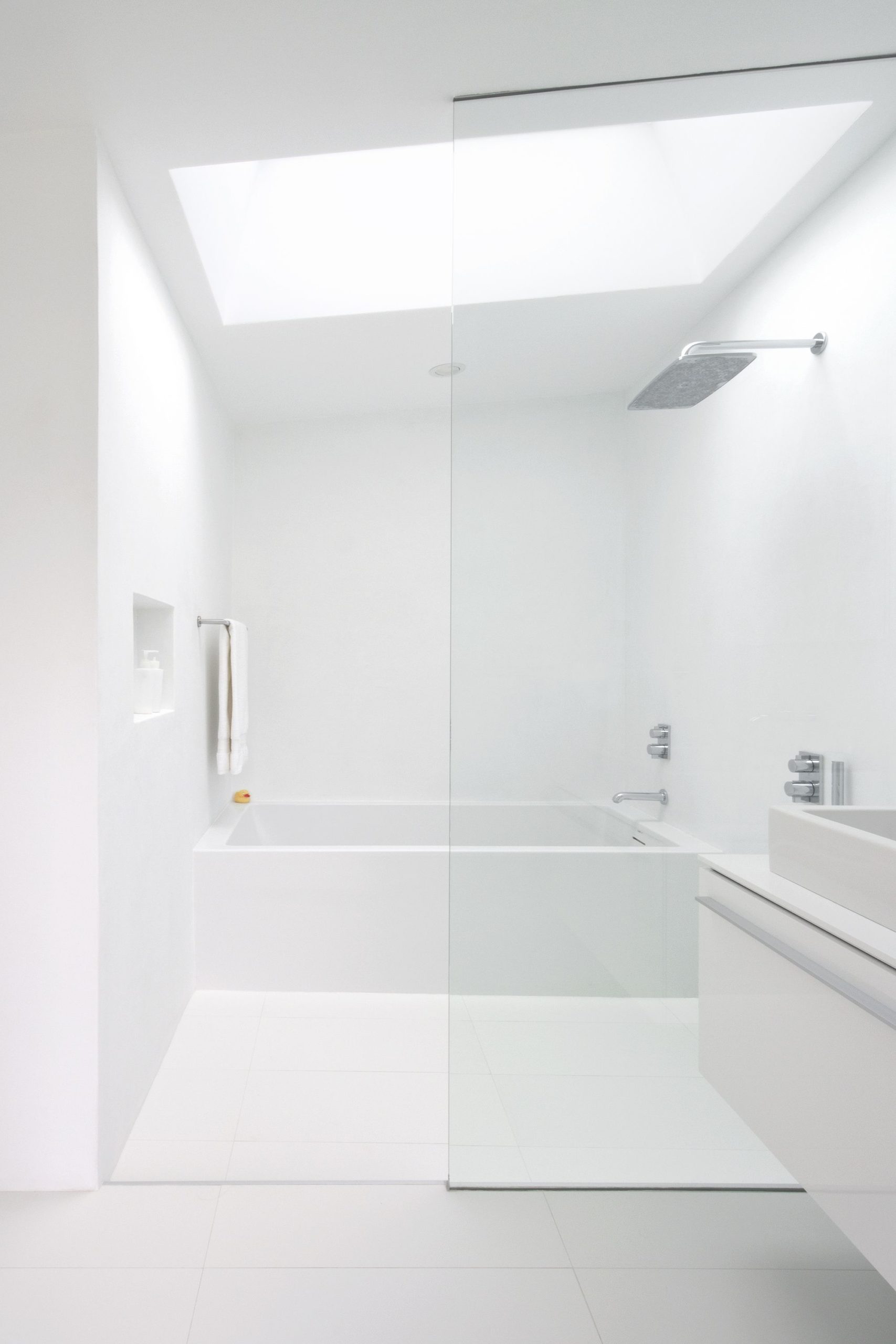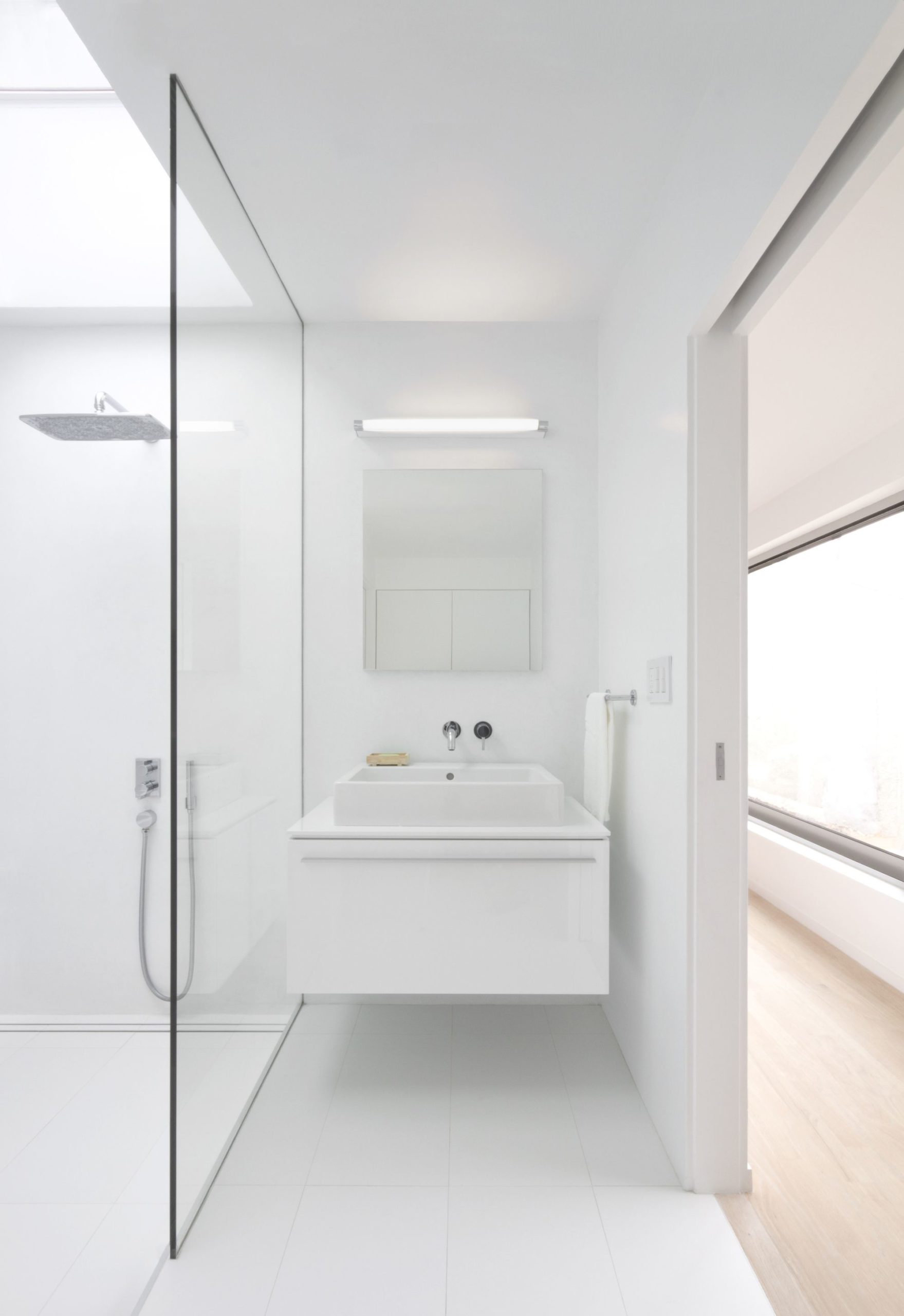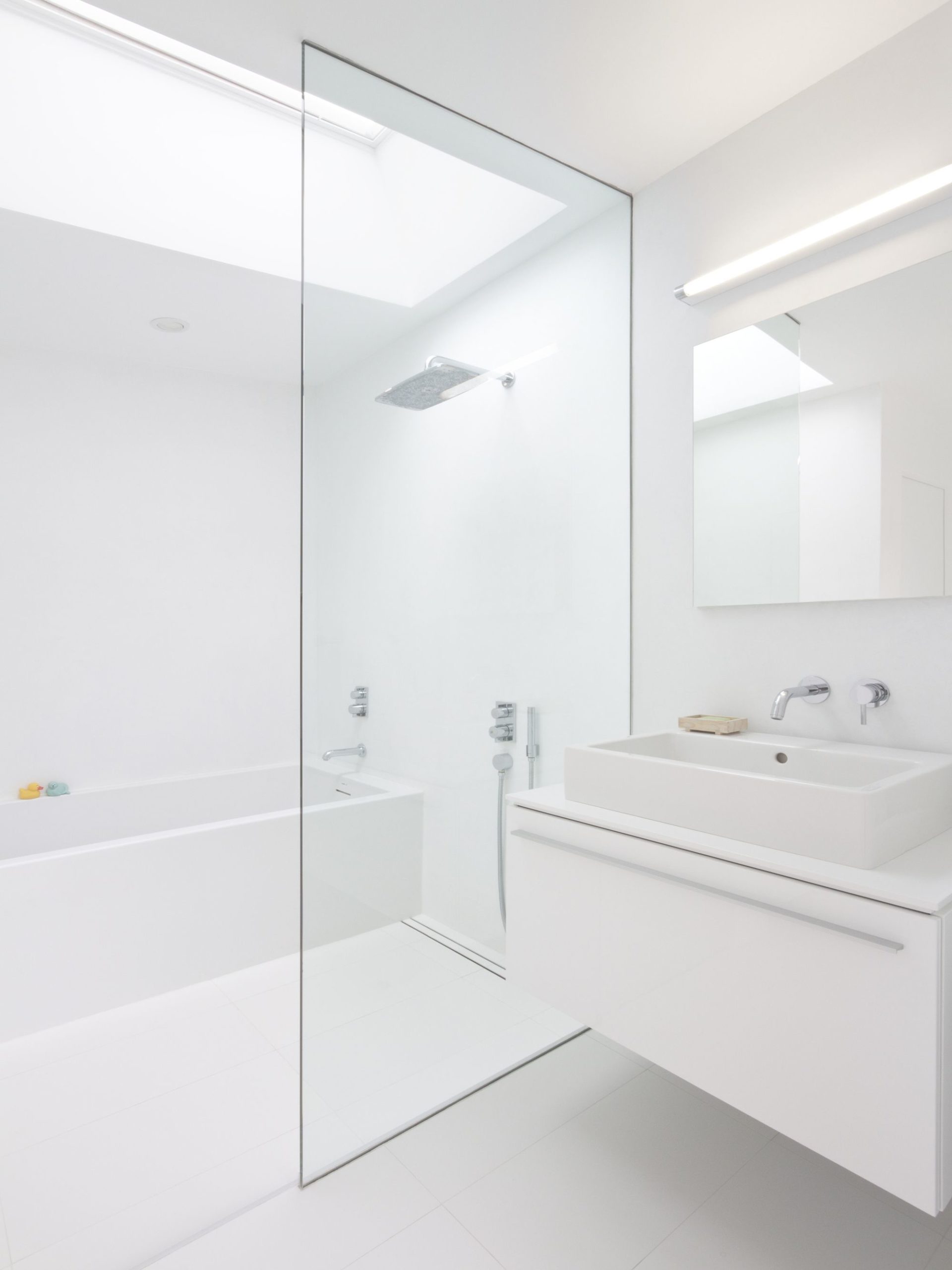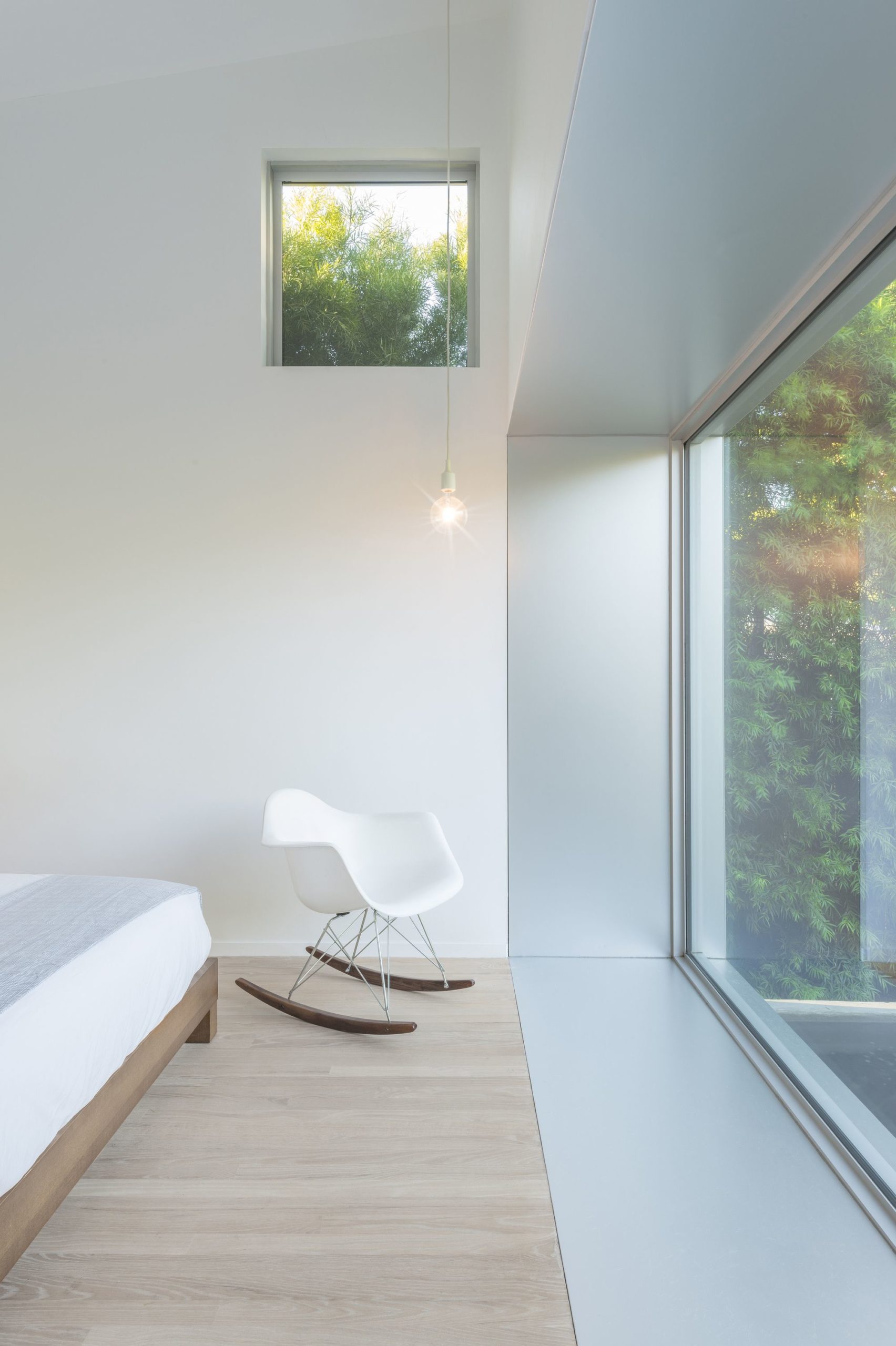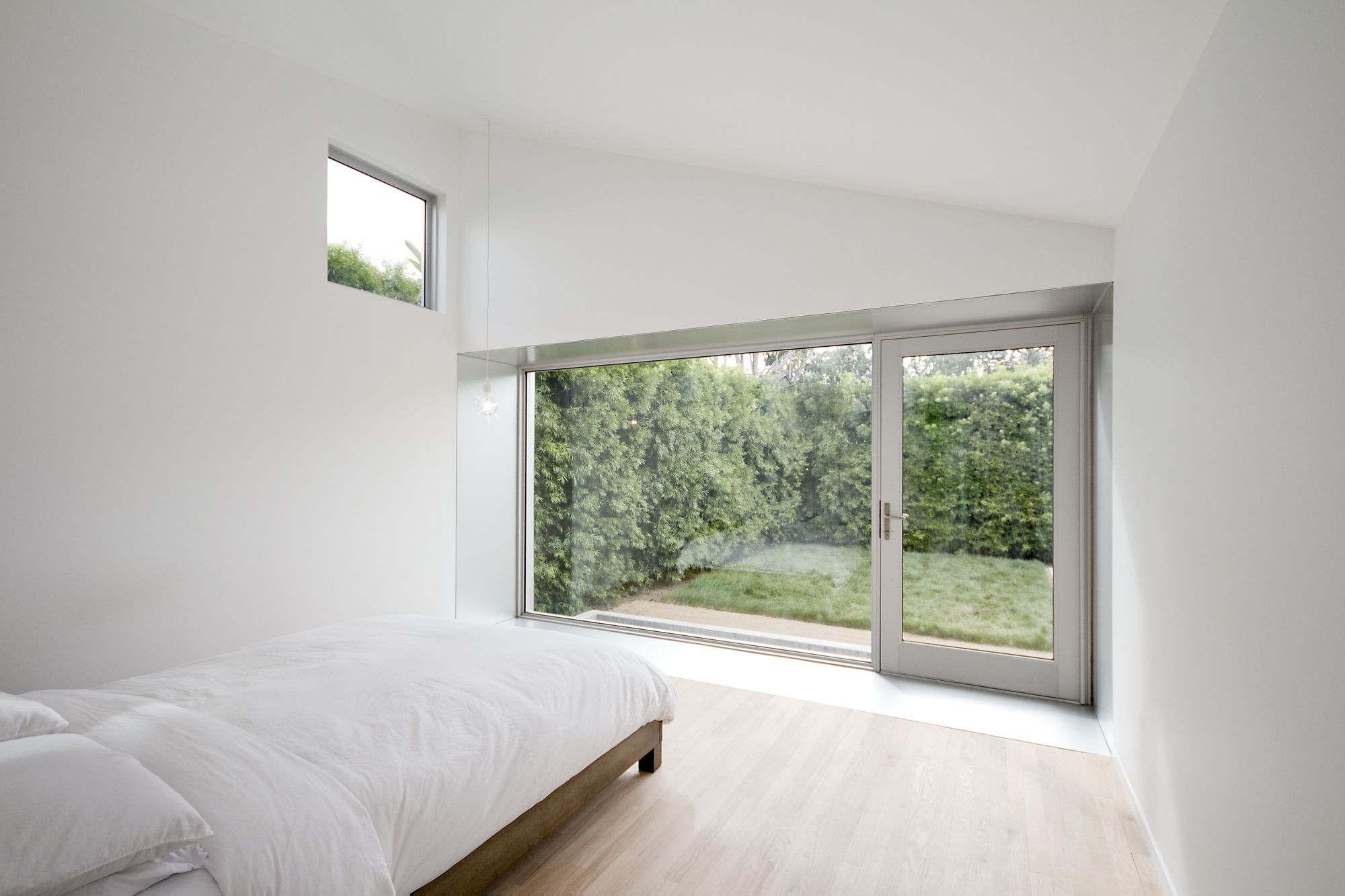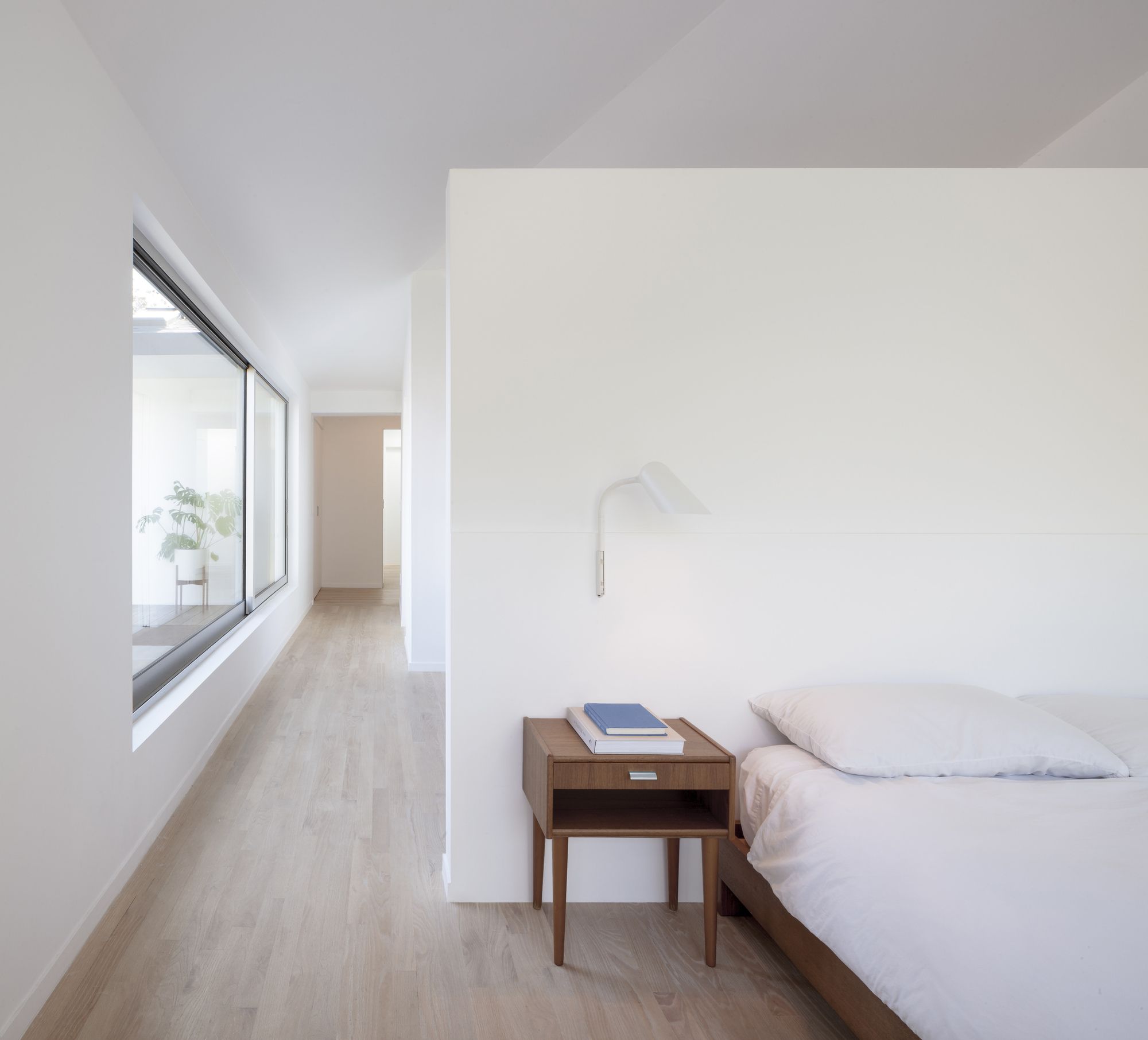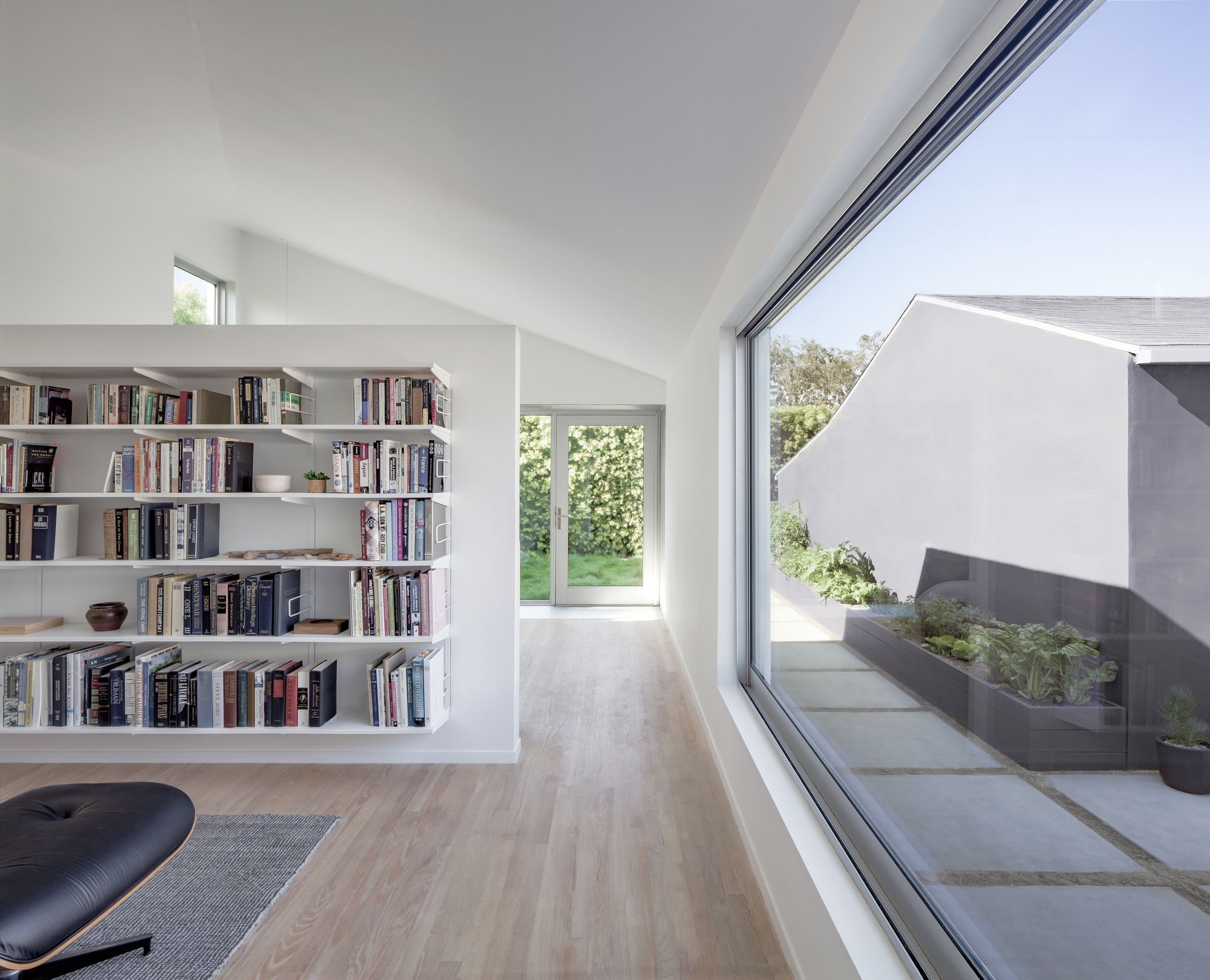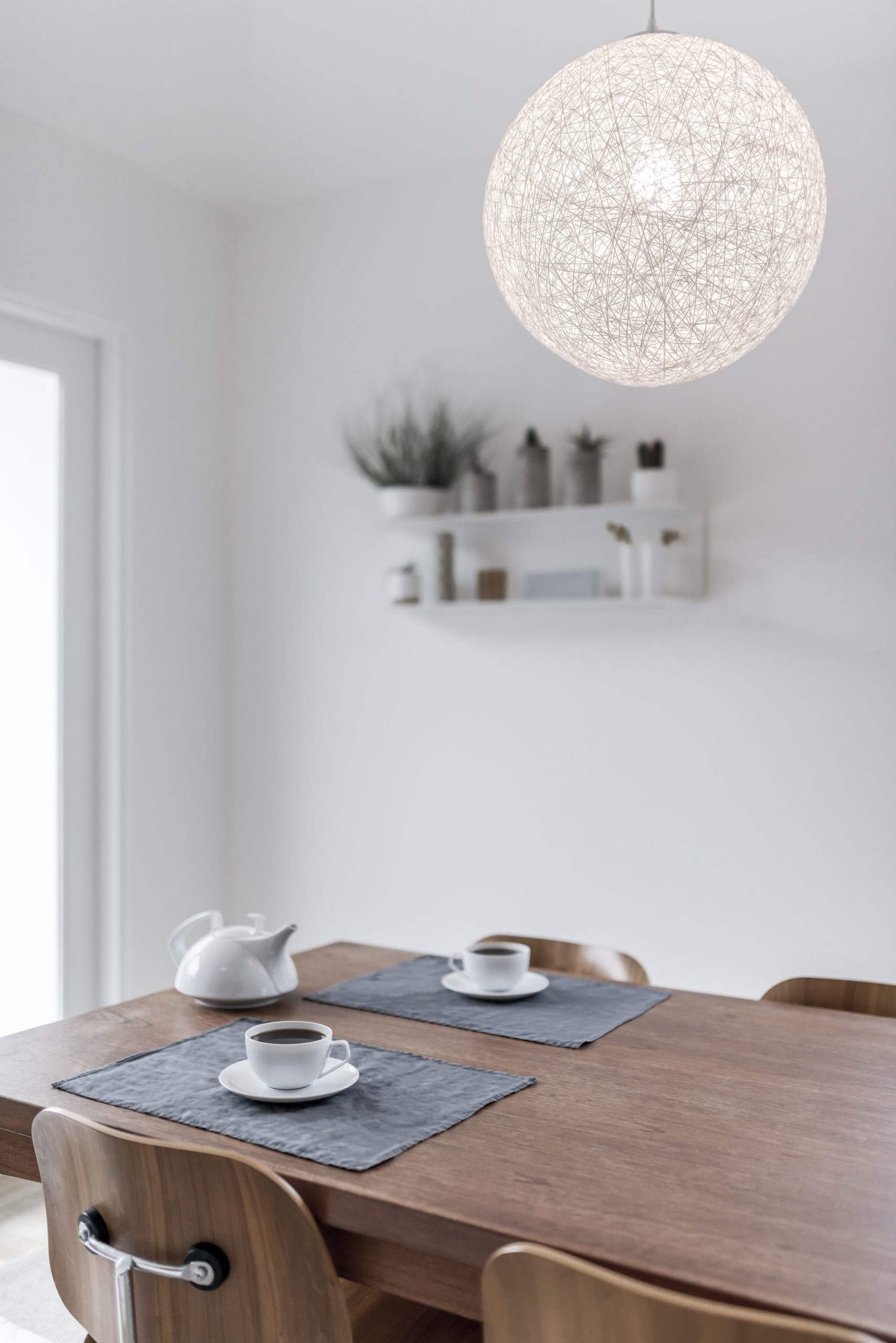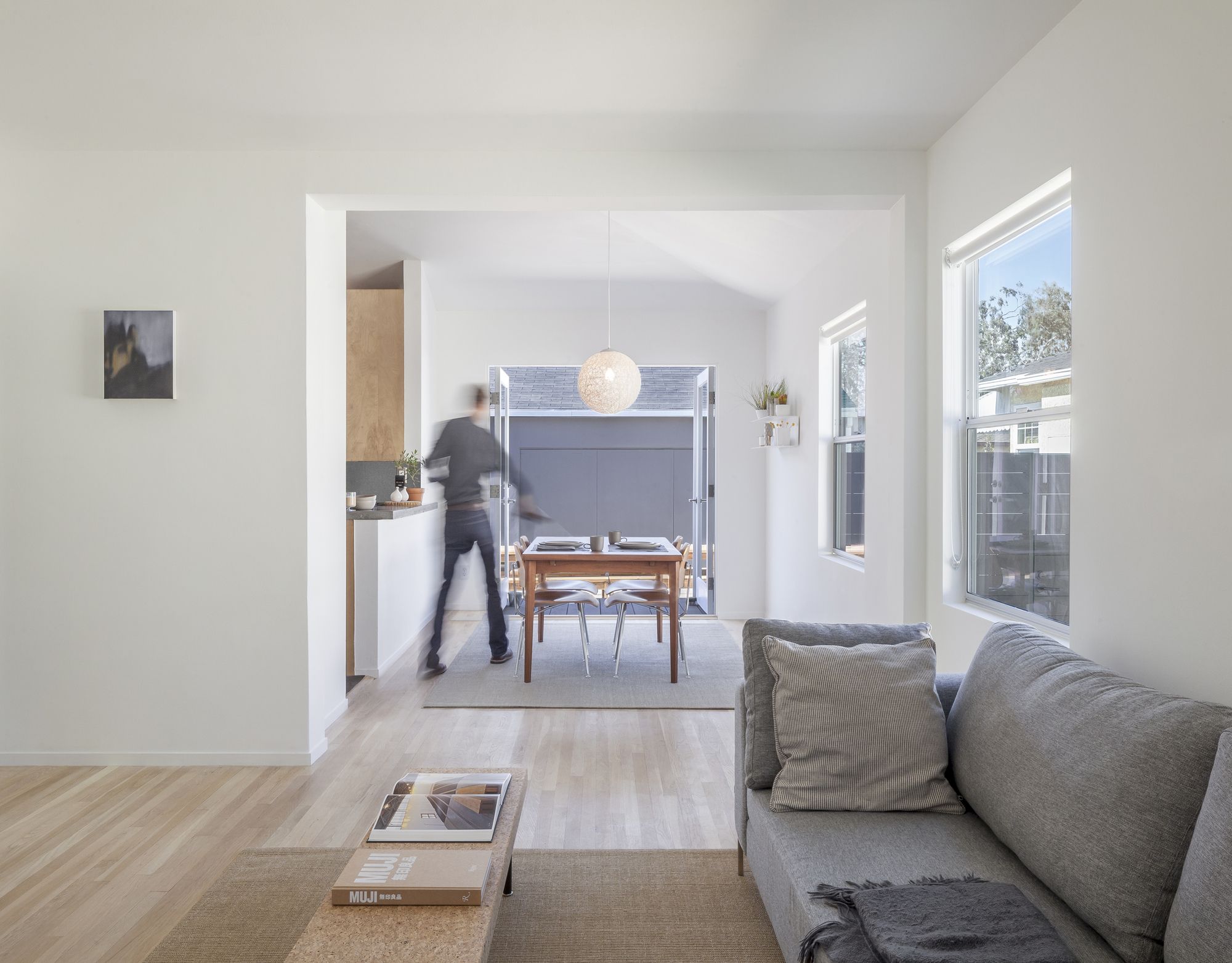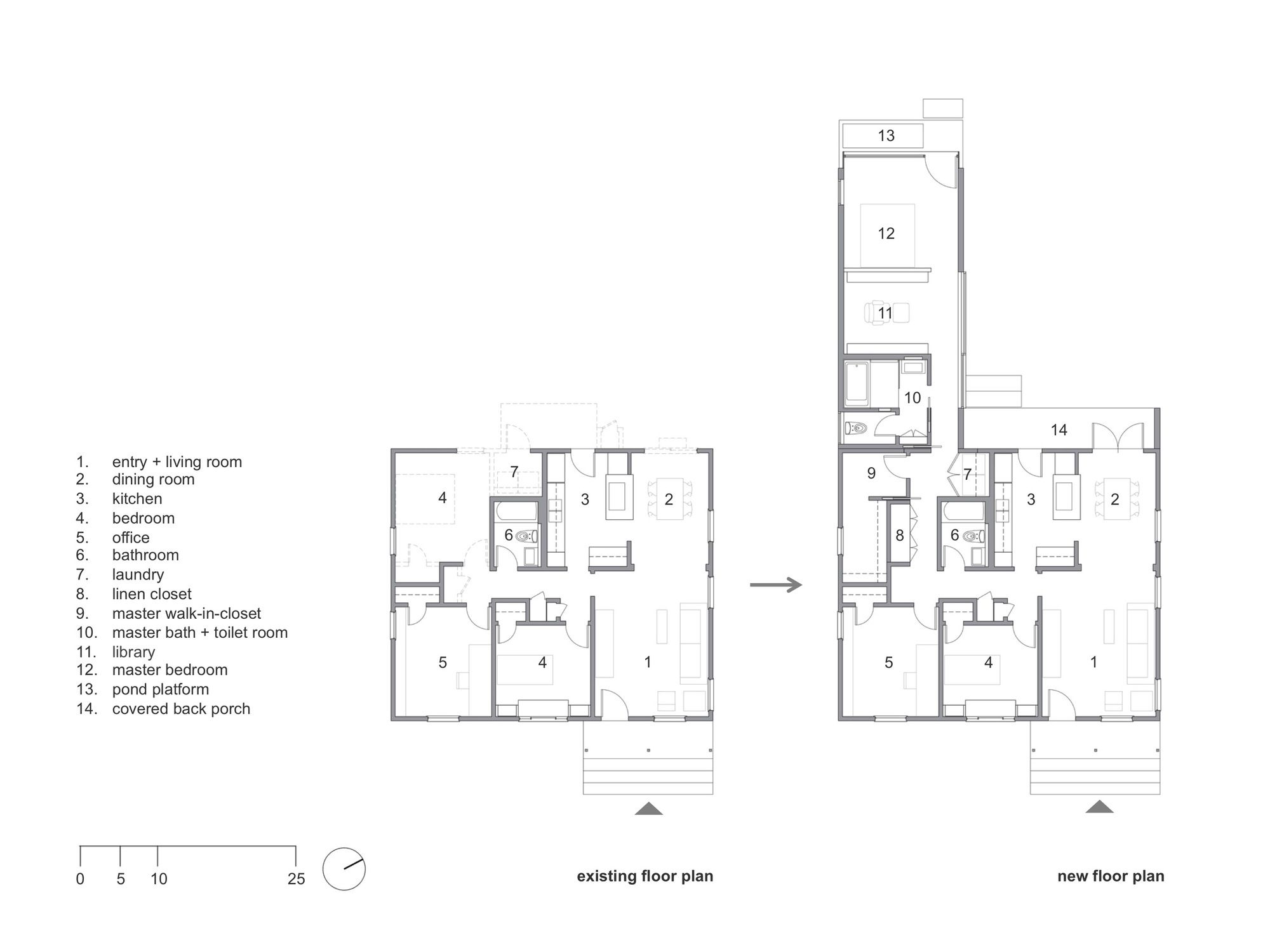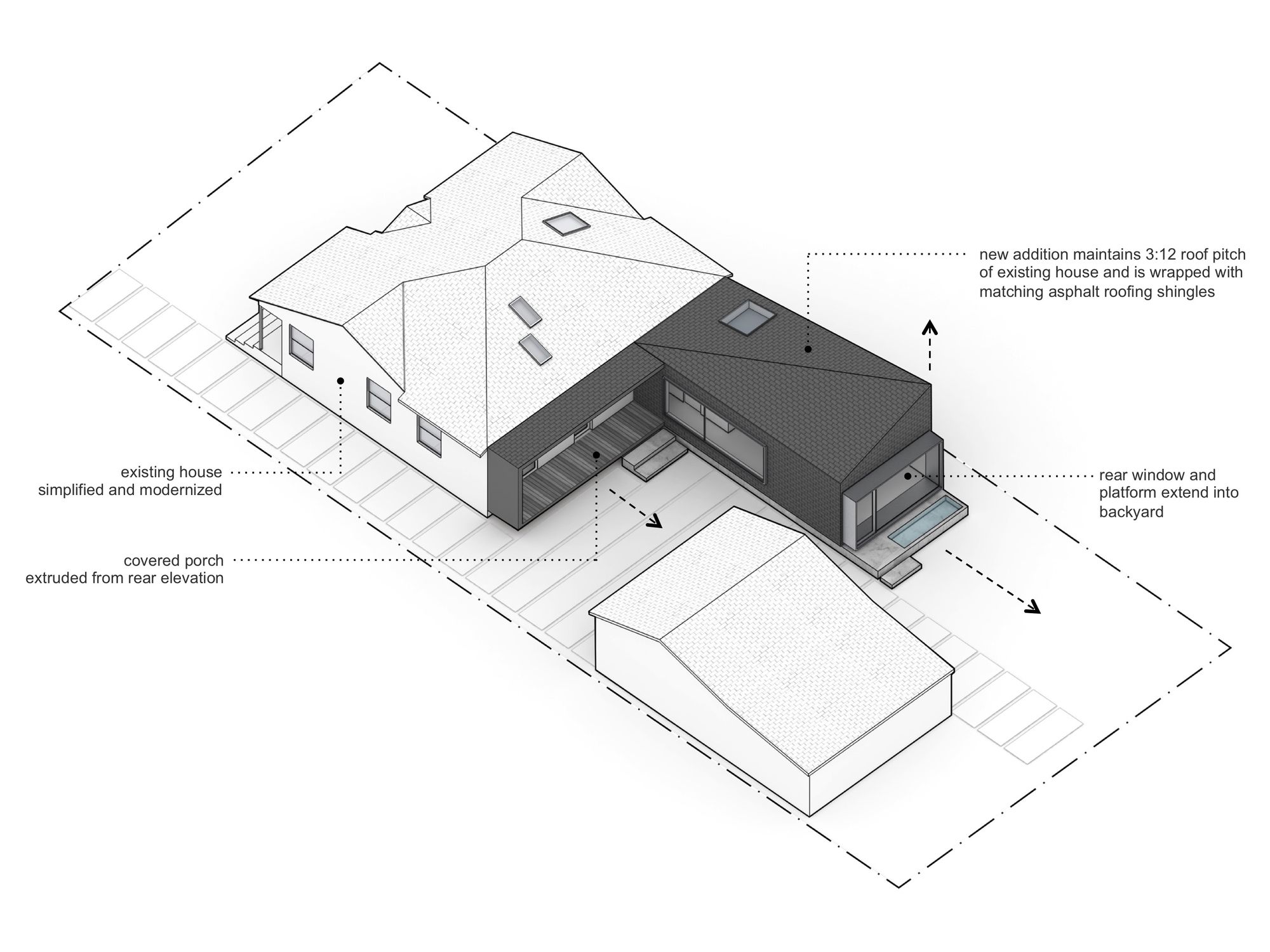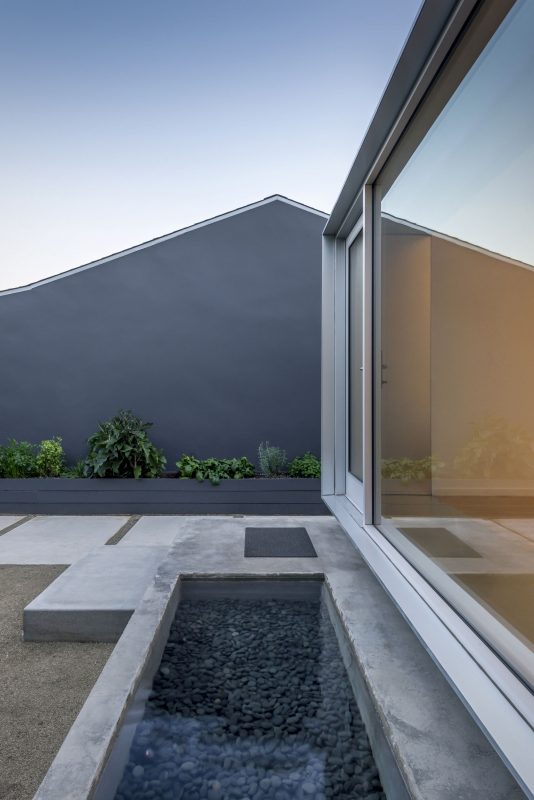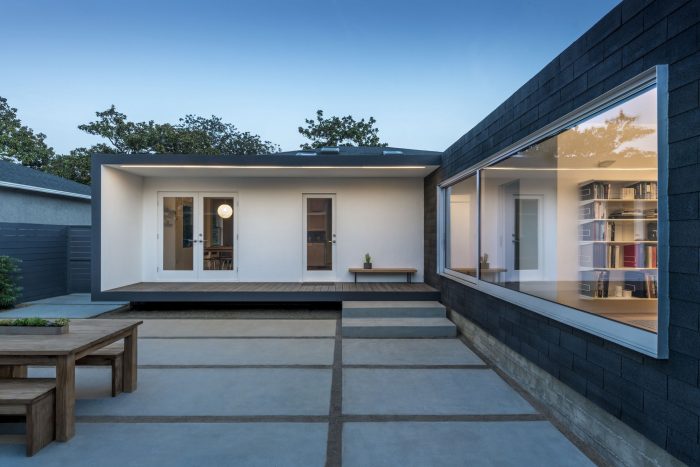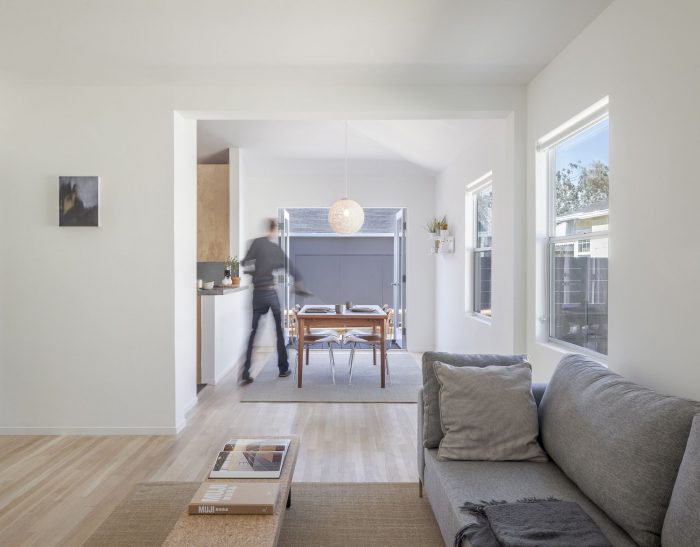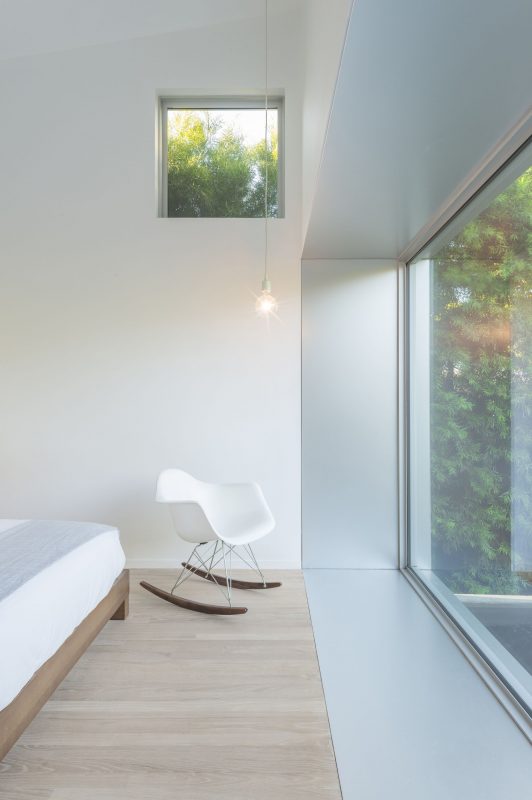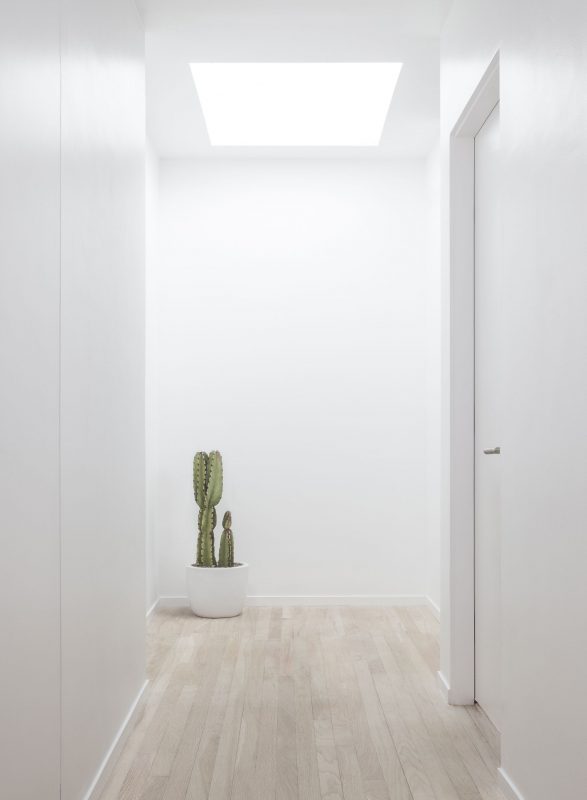Rear Window House, the private family residence of Edward Ogosta, AIA, is a discreet yet decidedly modern addition and remodel to a 1944 bungalow in an area abundant with intact dwellings of the same era. Key to the serene, minimal design was a sensitivity to context to lessen the addition’s impact on the neighborhood.
Through careful sequencing of new spaces and strategically located apertures, the home opens itself up to become deeply integrated with the rear garden. All exterior and interior finishes are unified to create a seamless architectural experience using a restricted material palette of glass, aluminum, wood, asphalt shingles, and concrete. Existing interiors were updated to be simple and bright, via new skylights, bleached oak floors, and white walls. The project culminates in the master bedroom’s expansive rear window, which is framed by aluminum-clad plate steel and cantilevers above a small pond. The design demonstrates how a thoughtful, strategic intervention can breathe new life into an older home, serve the needs of the contemporary family, and maintain neighborhood scale.
While the existing house served admirably as a compact starter home for decades, the architect’s growing family necessitated building a master suite extension into the backyard. Guided by a philosophy of making the most impact with the least number of moves, Ogosta started with the removal of a large, centrally located tree to liberate space for the simple rectangular volume. To strengthen the connection between old and new, the addition maintains the traditionally pitched roof slope prevailing in the original home and throughout the neighborhood, but with a geometric twist to create a more open, airy feeling inside. The new volume is entirely skinned with asphalt roofing shingles, anchoring the building to the vernacular materiality of the area.
To create the home’s signature rear window, Ogosta integrated plate steel and moment frames for the extruded aluminum-wrapped enclosure that cantilevers out two feet from the building face. The glass wall features a built-in door that leads to the backyard pond and garden via a stepped concrete plinth. The window offers the intensely private experience of being surrounded by nature, and at times the home feels far from the city. Tall hedges planted around the property reduce noise pollution from the nearby 405 Freeway and provide added privacy, aiding in the quiet atmosphere Ogosta and his family desire.
Influenced by the California Minimalism practiced by the Light and Space movement of the 1960s, Ogosta sought to create moments of clarity that conjure a serene, meditative experience. The end of a hallway is intentionally kept pure of furnishings or artwork to draw focus on the natural light coming in from the skylight above. Strategically placed apertures and skylights bathe the home in intersecting light of varying temperatures, creating a subtle drama and interplay between warm and cool gradients, recalling the experience of a James Turrell Skyspace.
Project Info:
Architects: Edward Ogosta Architecture
Location: Culver City, United States
Lead Architects: Ed Ogosta
Area: 1450.0 ft2
Project Year: 2017
Photographs: Steve King
Manufacturers: Dornbracht, Duravit, VELUX, Western Window Systems
Project Name: Rear Window House
